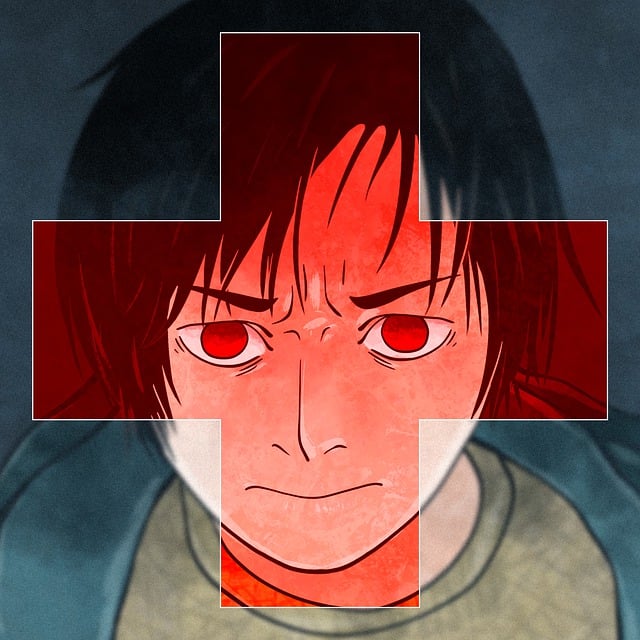Post-Traumatic Stress Disorder (PTSD) is a severe mental health condition triggered by traumatic events, impacting daily life with symptoms like flashbacks, nightmares, and emotional disturbances. Effective PTSD treatment involves specialized therapies like CBT, EMDR, and exposure therapy, aiming to process traumatic memories and gain insights into trauma. Early intervention, supportive counseling, and medication are key components. Innovations in treatment include EMDR and VR therapy, while online counseling platforms enhance accessibility. Mental health professionals guide patients through evidence-based methods, educate them on self-care, and foster community through group therapy. Creating a supportive environment, integrating self-care practices, and implementing long-term care strategies help individuals manage PTSD symptoms and improve their quality of life.
“Professional PTSD treatment is an essential aspect of managing this prevalent mental health condition. Post-Traumatic Stress Disorder, or PTSD, can significantly impact individuals’ daily lives, affecting their emotions, thoughts, and behaviors after traumatic events. Understanding PTSD involves recognizing its diverse symptoms, from flashbacks and nightmares to avoidance and heightened irritability. This article explores comprehensive strategies for effective treatment, including traditional therapies, emerging innovations, and the critical role of mental health professionals. We also delve into creating supportive recovery environments and long-term care strategies to aid individuals in overcoming PTSD.”
Understanding Post-Traumatic Stress Disorder (PTSD)

Post-Traumatic Stress Disorder (PTSD) is a complex mental health condition that can develop after an individual experiences or witnesses a traumatic event. It’s a well-recognized issue among veterans, first responders, and individuals who have survived accidents, natural disasters, or acts of violence. The symptoms of PTSD often include intrusive memories, flashbacks, nightmares, intense emotional reactions, and physical sensitivity to things that remind them of the trauma. These reoccurring experiences can significantly disrupt daily life, making it challenging to perform routine tasks or maintain relationships.
Understanding PTSD is a crucial step in seeking effective treatment. Professional PTSD treatment focuses on helping individuals process and overcome these traumatic memories and emotions. Through various therapeutic approaches, such as cognitive behavioral therapy (CBT), eye movement desensitization and reprocessing (EMDR), and exposure therapy, patients can learn to manage their symptoms, gain insights into their trauma, and develop healthy coping strategies. Early intervention and specialized care are key to managing PTSD effectively and improving overall well-being.
Common Symptoms and Signs of PTSD

Post-Traumatic Stress Disorder (PTSD) is a mental health condition that can affect individuals who have experienced or witnessed a traumatic event. The symptoms are varied and often severe, impacting daily life and functioning. Common signs include intrusive memories or flashbacks to the trauma, nightmares, avoidance of situations or people that remind them of the event, heightened anxiety and irritability, and physical sensations like rapid heartbeat or sweating. Individuals with PTSD may also struggle with concentration, feel emotionally numb, or have intense negative thoughts about themselves or the world around them. These symptoms can be debilitating, but professional PTSD treatment offers a lifeline. Through specialized therapy, medication, and support groups, individuals can learn coping strategies, process their trauma, and regain control of their lives.
Traditional Treatment Approaches for PTSD

In addressing Post-Traumatic Stress Disorder (PTSD), traditional treatment approaches have long relied on a combination of psychotherapy and, in some cases, medication. One widely recognized method is Cognitive Processing Therapy (CPT), which helps individuals challenge and reframe negative thoughts associated with traumatic events. Another effective technique is Eye Movement Desensitization and Reprocessing (EMDR), allowing patients to process and resolve distressing memories through side-to-side eye movements or other bilateral stimulation.
These therapeutic interventions are often coupled with exposure therapy, gradually exposing individuals to traumatic memories in a safe environment to reduce their intensity over time. Supportive counseling provides a crucial space for individuals to share their experiences and emotions without judgment, fostering resilience. Additionally, medication such as selective serotonin reuptake inhibitors (SSRIs) may be prescribed to alleviate symptoms of anxiety and depression commonly associated with PTSD.
Emerging Therapies in Professional PTSD Treatment

The field of mental health is constantly evolving, and professional PTSD treatment has seen a surge in innovative therapies that offer hope to those struggling with post-traumatic stress disorder. One emerging approach gaining traction is Eye Movement Desensitization and Reprocessing (EMDR), which assists individuals in processing traumatic memories and reducing the intensity of associated emotions. This therapy involves guided eye movements while recalling the trauma, helping patients work through their distressing memories and symptoms.
Another promising development is the integration of technology into PTSD treatment plans. Virtual reality (VR) therapy, for instance, immerses individuals in simulated environments that replicate traumatic scenarios, allowing them to confront and overcome their fears in a controlled setting. This modern approach has shown significant potential in desensitizing patients to triggers and promoting healing. Additionally, digital platforms offering online counseling and support groups have made PTSD treatment more accessible, ensuring individuals can receive help from the comfort of their homes.
The Role of Mental Health Professionals in PTSD Management

Mental health professionals play a pivotal role in effectively managing Post-Traumatic Stress Disorder (PTSD). They are equipped with specialized knowledge and skills to help individuals navigate the complexities of this condition. Through individual therapy sessions, these professionals guide patients through evidence-based treatment modalities such as Cognitive Behavioural Therapy (CBT) or Eye Movement Desensitization and Reprocessing (EMDR), which aim to process traumatic memories and reduce the intensity of associated symptoms.
In addition to direct therapy, mental health experts can provide crucial support by educating patients about PTSD, fostering self-care strategies, and offering a safe, non-judgmental space for expression. They also facilitate group therapy sessions, creating a sense of community among individuals facing similar challenges. This collaborative approach enhances healing by promoting understanding, reducing feelings of isolation, and empowering individuals to actively participate in their recovery journey.
Creating a Supportive Environment for PTSD Recovery

Creating a supportive environment is paramount in the journey towards PTSD recovery. This involves fostering a safe, non-judgmental space where individuals feel comfortable expressing their emotions and trauma experiences. A professional setting equipped with specialized therapists and counselors plays a pivotal role in this process, employing evidence-based therapies like Cognitive Processing Therapy (CPT) or Eye Movement Desensitization and Reprocessing (EMDR). These therapeutic approaches help individuals process traumatic memories effectively, reducing symptoms of PTSD over time.
Beyond therapy sessions, supportive environments can include group therapy settings where sharing experiences fosters a sense of community and belonging. Peer support groups, in particular, offer a unique opportunity for individuals with PTSD to connect, understand, and uplift one another. Additionally, promoting self-care practices such as mindfulness, meditation, and physical exercise within this environment can significantly enhance the overall healing process, contributing to long-term recovery and improved quality of life for those managing PTSD.
Long-term Care and Relapse Prevention Strategies

Many individuals undergoing Professional PTSD Treatment often require long-term care strategies to manage their symptoms effectively and prevent potential relapses. This comprehensive approach is vital for sustained recovery, as PTSD can be a complex and recurring condition. Therapists play a crucial role in equipping clients with coping mechanisms and skills to navigate triggers and challenges that may arise over time. By integrating evidence-based practices, such as cognitive behavioural therapy (CBT) and eye movement desensitisation and reprocessing (EMDR), professionals can help individuals develop strategies to regulate emotions, challenge unhelpful thought patterns, and process traumatic memories safely.
Relapse prevention is a key component of long-term care, focusing on identifying high-risk situations and implementing strategies to manage them proactively. This may include learning distress tolerance skills, establishing robust support networks, and developing personalized plans for managing stress and anxiety. Regular therapy sessions, coupled with ongoing self-care practices like mindfulness meditation and physical exercise, can empower individuals to maintain their progress and prevent PTSD symptoms from escalating. Such holistic strategies ensure that those recovering from PTSD have the tools needed to lead fulfilling lives, even in the face of challenging circumstances.
